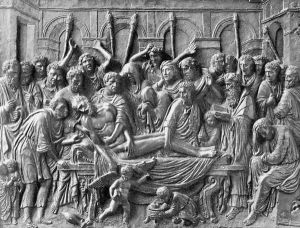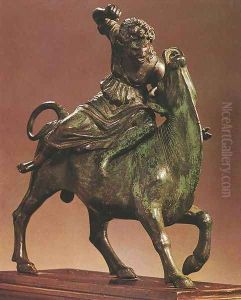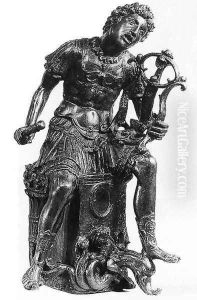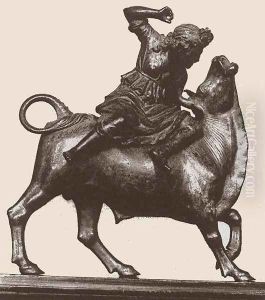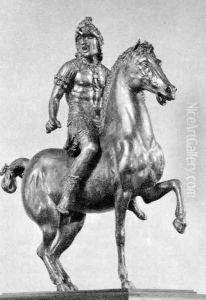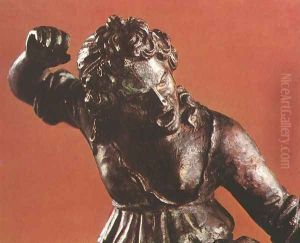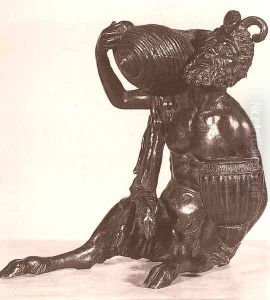Il Riccio Paintings
Il Riccio, born Andrea Briosco in Padua, Italy, in 1469, was an influential Italian sculptor and bronze-caster of the Renaissance period, particularly noted for his exquisite bronze statuettes and objects. His nickname, 'Il Riccio' meaning 'The Curly-Haired One', highlights a personal characteristic, a common practice in the naming of artists at the time. Trained in Padua, a vibrant artistic center, Il Riccio became a pivotal figure in the transition from the Gothic to the Renaissance style in Northern Italy, blending the regional Gothic traditions with the emerging Renaissance ideals of humanism and naturalism.
Il Riccio's early career was marked by his collaborations with leading artists and architects of his time, including working on projects for the Basilica of Saint Anthony in Padua. His work was characterized by a deep understanding of classical antiquity, yet he managed to infuse a sense of vitality and emotion into his sculptures that was distinctly Renaissance. His bronzes, often small in scale, were highly prized among the courts of Europe for their intricate detail, expressive figures, and complex iconography. They include candelabra, inkstands, and small religious and mythological figures, reflecting the Renaissance fascination with classical themes and the human form.
One of Il Riccio's most notable contributions to art was his development of the small bronze statuette, a genre that became highly popular among collectors during the Renaissance. His works in this area are considered some of the finest examples of the genre, demonstrating an exceptional level of craftsmanship and artistry. Furthermore, Il Riccio's influence extended beyond his sculptures; he was also a skilled medalist and contributed to the design of funerary monuments, thereby impacting various facets of Renaissance art and architecture.
Il Riccio's legacy is seen in the way he combined technical skill with a unique artistic vision, leaving a lasting impact on the Renaissance art world. His work reflects the era's intellectual and cultural aspirations, embodying the Renaissance ideals of beauty, proportion, and harmony. He died in Padua in 1532, leaving behind a body of work that continues to be studied and admired for its innovation and mastery.
